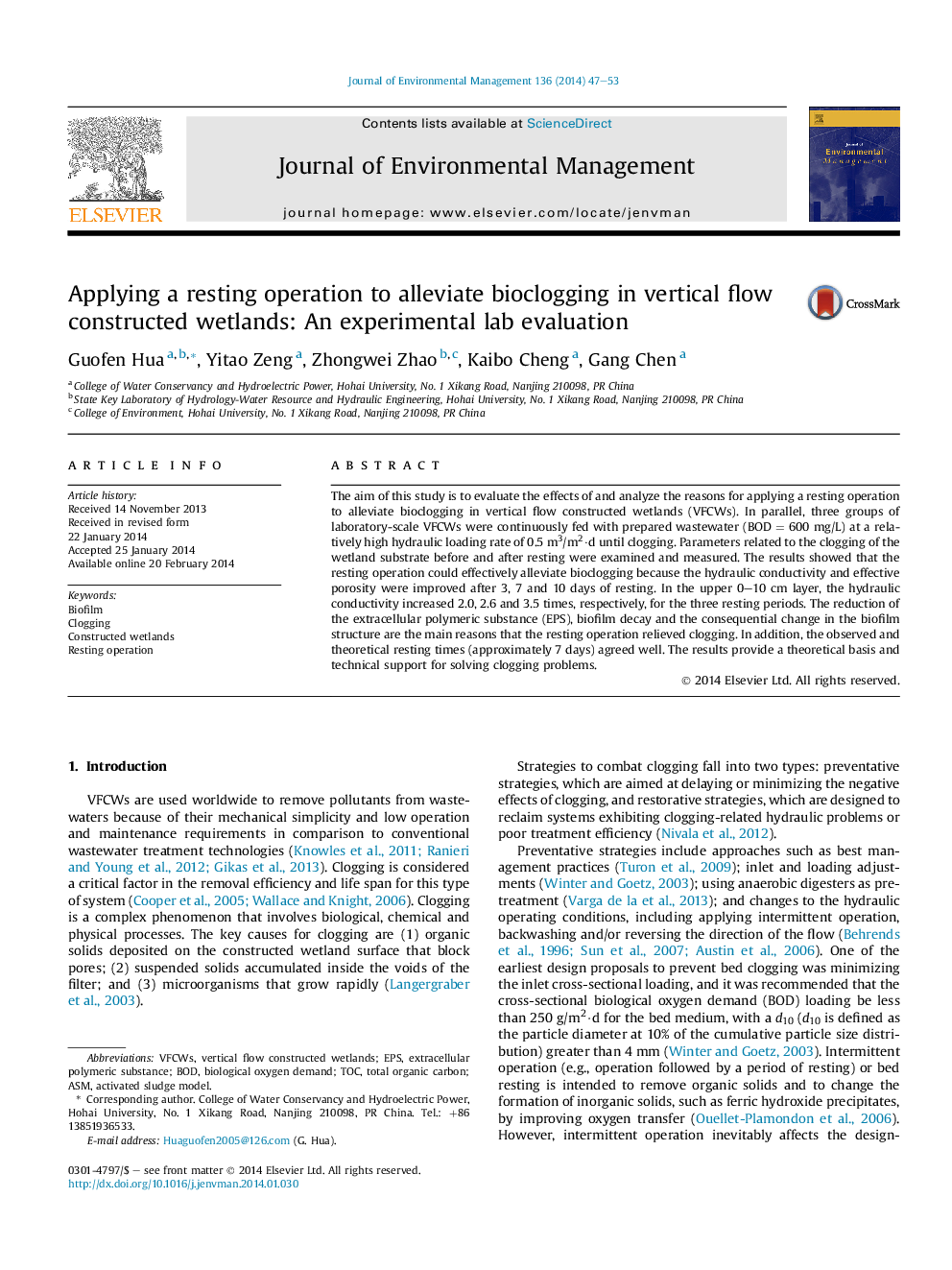| Article ID | Journal | Published Year | Pages | File Type |
|---|---|---|---|---|
| 1055706 | Journal of Environmental Management | 2014 | 7 Pages |
•Applying a resting period is a practical way to reduce bioclogging.•The reduction of EPS and biomass were quantitatively evaluated after resting.•The main reasons for resting operation relieving clogging were analyzed.•The observed and theoretical resting times agreed well.
The aim of this study is to evaluate the effects of and analyze the reasons for applying a resting operation to alleviate bioclogging in vertical flow constructed wetlands (VFCWs). In parallel, three groups of laboratory-scale VFCWs were continuously fed with prepared wastewater (BOD = 600 mg/L) at a relatively high hydraulic loading rate of 0.5 m3/m2·d until clogging. Parameters related to the clogging of the wetland substrate before and after resting were examined and measured. The results showed that the resting operation could effectively alleviate bioclogging because the hydraulic conductivity and effective porosity were improved after 3, 7 and 10 days of resting. In the upper 0–10 cm layer, the hydraulic conductivity increased 2.0, 2.6 and 3.5 times, respectively, for the three resting periods. The reduction of the extracellular polymeric substance (EPS), biofilm decay and the consequential change in the biofilm structure are the main reasons that the resting operation relieved clogging. In addition, the observed and theoretical resting times (approximately 7 days) agreed well. The results provide a theoretical basis and technical support for solving clogging problems.
